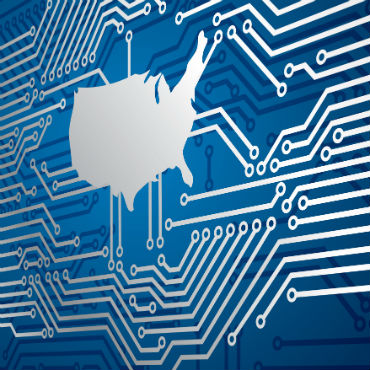CTIIC chief: We're up and running

The nascent Cyber Threat Intelligence Integration Center provides a mechanism for attributing cyber breaches to threat actors.

The Cyber Threat Intelligence Integration Center came out of a simple idea: As with terrorism, the intelligence community needs to produce a holistic, rather than anecdotal, picture of cyber threats.
The absence of such a portal for cyber-threat intelligence came into stark relief in the aftermath of the November 2014 cyberattack on Sony Pictures Entertainment. There was no one-stop shop the White House could turn to when looking to lay blame for that hack.
In an interview six months after being named CTIIC Director, Tonya Ugoretz said her team is providing a much-needed pipeline of cyber-threat intelligence to policymakers.
CTIIC produces a threat intelligence summary about twice a week to contextualize recent cyber-threat reporting from intelligence agencies. The report is designed to make sense to a non-technical audience, she said.
"That product and other analytic products that we produce are directly informing policy discussions [and] interagency meetings," Ugoretz said in a recent interview.
For Ugoretz, a career FBI intelligence analyst, a big part of CTIIC's mission is explaining a technical field to policymakers who "increasingly need to be cognizant of the role that cyber plays in regional and other issues," as she put it.
To that end, CTIIC incorporates the views of regional or sector-specific analysts, depending on the context. "Attribution is as much an art as a science," Ugoretz said. "Often it's not the technical indicators that are going to solve the question for you."
The U.S. government has not publicly attributed the cyberattack on the Ukrainian power grid last December, which cut power for some 225,000 people, to any group or sponsor. Ugoretz said the lack of attribution was a function of the information available on the attack and the level of confidence the intelligence community had in assigning blame. Ukraine's state security service has blamed Russia.
CTIIC initiated a multiagency exercise that explored different scenarios for who carried out the Ukraine hack, Ugoretz added.
Greasing the inter-agency wheels
CTIIC had a messy beginning. House lawmakers were irked that they didn't get a heads-up on its creation, and Department of Homeland Security officials were reportedly worried that the new agency might encroach on their own work.
Many months later, however, Ugoretz said there isn't any noticeable inter-agency friction. "I can't think of an instance where any of our personnel have been parochial," she said.
The structure of CTIIC seems designed to preclude turf wars. In addition to her FBI experience, Ugoretz has also done stints at the CIA, DHS, and National Intelligence Council. Her deputy came from the National Security Agency, while CTIIC's research chief is a CIA hand.
CTIIC entered a crowded space that includes multiple cyber centers across federal government. To avoid duplication, CTIIC's advisory board includes the heads of other cyber centers, including DHS' National Cybersecurity and Communications Integration Center, and U.S. Cyber Command's Joint Operations Center.
CTIIC's success will hinge in part on being on the same wavelength as other cyber centers, Ugoretz said, adding, "I don't want CTIIC to be sitting here in a vacuum" at the Office of the Director of National Intelligence.
She offered a maxim for standing up new bureaucratic entities, as the ODNI that houses CTIIC was 11 short years ago: "You need to show value right away and you need to keep showing it" in order to justify resources allocated.
NEXT STORY: A $5.8B argument for better IT management


